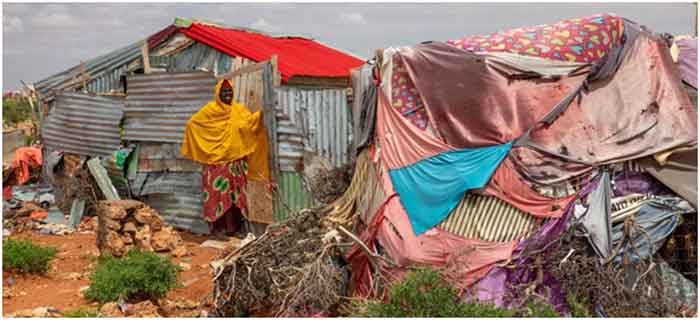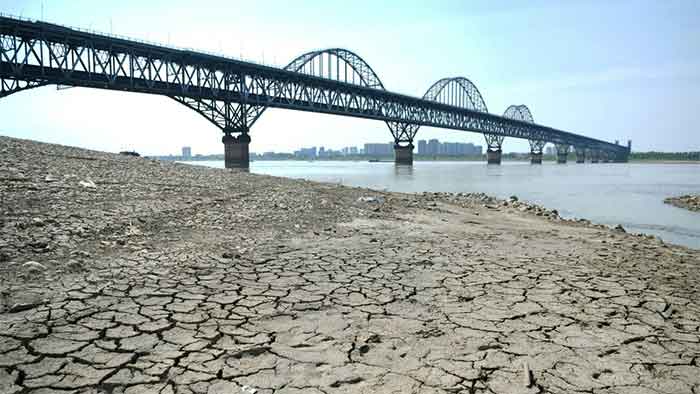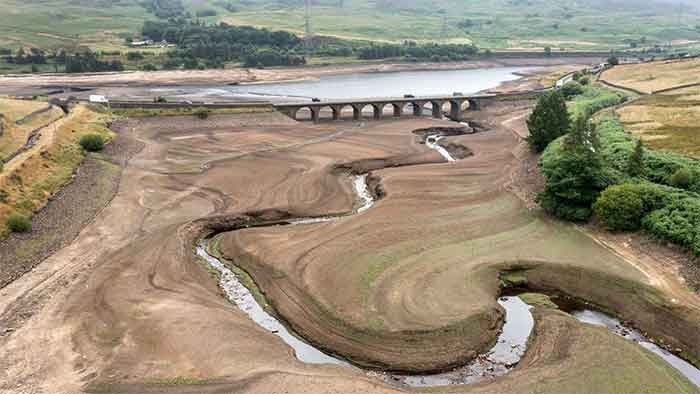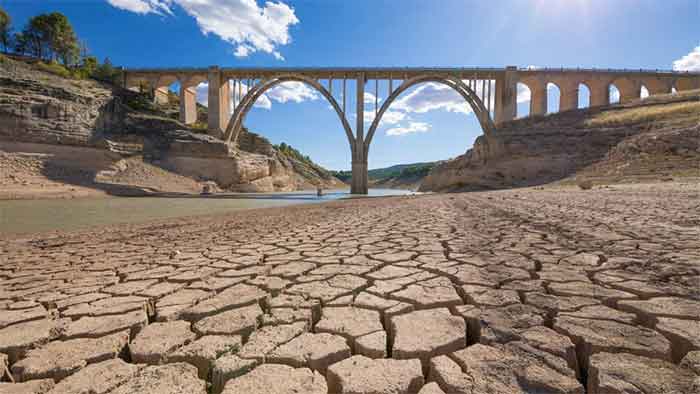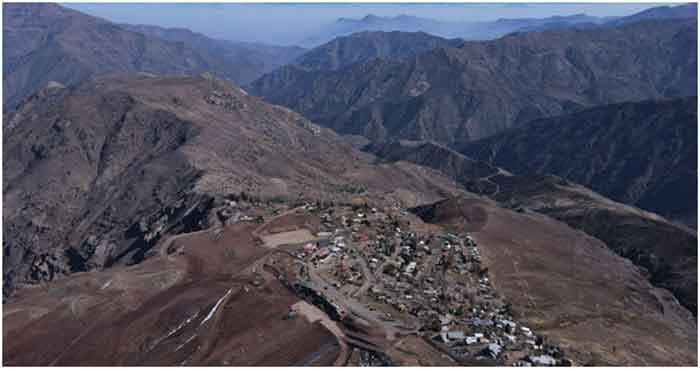
Chile authority has imposed new water restrictions for the capital city of Santiago, a city with six million population, as the country enters its 13th year of drought.
Claudio Orrego, the governor of the Santiago metropolitan region said: “And we are in an unprecedented situation in Santiago’s 491-year history where we have to prepare for there to not be enough water for everyone who lives here.”
The new plan involves a four-tier alert system, from green to red, beginning with public service announcements and expanding mandatory water restrictions.
According to The Guardian, the “green light” signal means when water is not being rationed, and a red light means just before water is being restricted. A yellow light will alert residents that a cut is coming within the next 24 hours.
When conditions are most extreme, Santiago will ration water on a rotating schedule with about 1.7 million customers losing access for up to 24 hours.
The Guardian said: “The alert system is based on the capacity of the Maipo and Mapocho rivers, which supply the capital with most of its water and have seen dwindling water levels as the drought drags on.”
“The government estimates that the country’s water availability has dropped 10 percent to 37 percent over the last 30 years and could drop another 50 percent in northern and central Chile by 2060.”
The Water Rationing May Be Permanent, As Climate Change Is To Stay
Rationing of water will depend upon the level of water deficit in the area’s rivers: If it drops too low, measured in liters per second, water rationing will be implemented on four, six, or 12 days basis.
“This is the first time in history that Santiago has a water rationing plan due to the severity of climate change,” Orrego said.
“It is important for citizens to understand that climate change is here to stay. It is not just global, it is local also.”
The only exemptions to Chile’s water rationing plan are for areas fed by well water or sources other than the two main rivers that currently feed the city.
Each region, which will consist of about 1.7 million customers, will then face a water cut for up to 24 hours at once.
The water levels in the Maipo and Mapocho rivers will determine when certain regions are being rationed and when they are not. The rivers, which have dropped between 10 and 37 percent over the last 30 years, supply the city with most of its water. Both rivers are constantly being monitored, and they are measured in liters per second.
By 2060, experts worry they will drop by another 50 percent. Parts of the city that have enough water, or that rely on other water resources, most likely will not be facing any limits or cuts. But regions that will face water cuts will likely rotate daily, enduring a cut every four days or so.
A number of factors are contributing to Chile’s drought. According to Merco Press, it is largely due to climate change. In the already arid country, temperatures have risen significantly, and waterfall has become incredibly scarce. This is due to greenhouse gases heavily depleting the ozone layer, which has triggered extreme weather conditions.
Animal agriculture is also a major contributor to droughts, and Chile is reportedly one of the world’s top 10 agricultural exporters, with an unusually large number of dairy and meat farms.
Grass Is Luxury
A Reuters report said:
In Santiago, grass is becoming a rare luxury amid a decade-long drought that has forced the city to roll out emergency measures to limit water use and led local authorities and landscapers to replace lush green plants with desert flora.
The changing face of the city underscores how the Andean country, a major copper and food producer, is having to adapt to a shifting and drier climate with an extended period of drought now in its thirteenth year.
“Santiago’s landscaping is from years ago, designed for a Mediterranean climate. Now we are in a semi-desert climate,” Valentina Vega, head of green areas in the city’s up-market district of Providencia, told Reuters. “We cannot waste all that water anymore.”
In Vega’s municipality, the local government plans to transform spaces alongside roads and highways from green spaces into sustainable gardens with plants that consume little water and use drip irrigation.
“This saves almost 90% of water compared to traditional landscaping,” she added.
The city is also divided. Wealthy areas have more green meadows and leafy tree-lined avenues, which are little seen in less-affluent boroughs. But everyone is making changes, incorporating native vegetation and modernized irrigation to avoid waste.
Economics student Aracely Rodriguez, 26, lives in Pudahuel, a lower-middle-class area in the northwest of Santiago.
“Where I live there are no parks or green areas nearby, there is not much to water,” Rodriguez said. “We try to take care of the water. We have a conscience.”
Rodrigo Fuster, an expert in water management from the University of Chile, said people needed to adapt their water use given the drier climate with less rainfall and snow in the nearby Andes, which has reduced river flow into the city.
“There is a lot of room to reduce water consumption,” Fuster said. “In a city like Santiago, with a semi-arid climate that is getting worse, it is unacceptable that we have grass and use water as if we were in London.”
In Santiago’s important metropolitan park, canals that carry water from the Maipo and Mapocho rivers to the park are 80% lower than normal. Park officials have fixed leaks, updated irrigation systems and developed “native nuclei” forests with trees better adapted for drier climates.
“The drought hits us all,” said Eduardo Villalobos, deputy director of the park, adding that people needed a “paradigm shift” in their daily habits to help save water.
In the park and others across Santiago, a combined five hectares of grass area has already been replaced, he said. This saves 300,000 liters of water in each watering cycle.
Residents were divided about the changes. Some said the new landscaping in places looked just like a pile of rocks, but others said it needed time and could also be beautiful.
Dina Robles pointed to a sustainable garden in front of her house full of bushes, colorful flowers and little foxtails that were swaying in the afternoon breeze with the fragrance of mint and rosemary from plants nearby.
“A neighbor told me she regretted the change, that they had been promised flowers and there were only stones,” Robles said with a laugh, adding that it took three months for the plants near house to bloom.
“Then it all exploded in shades of violet and blue. It’s very beautiful,” she said.

